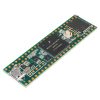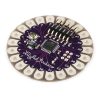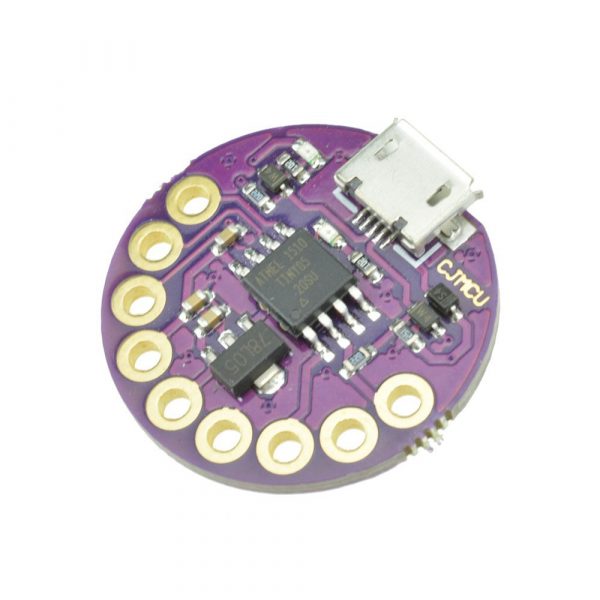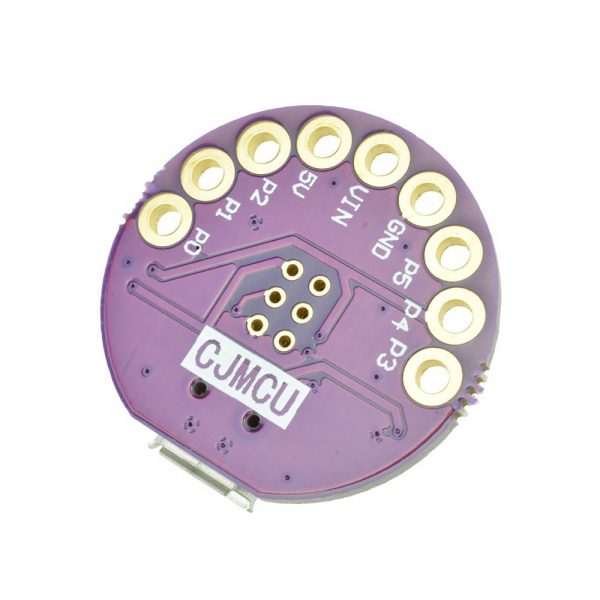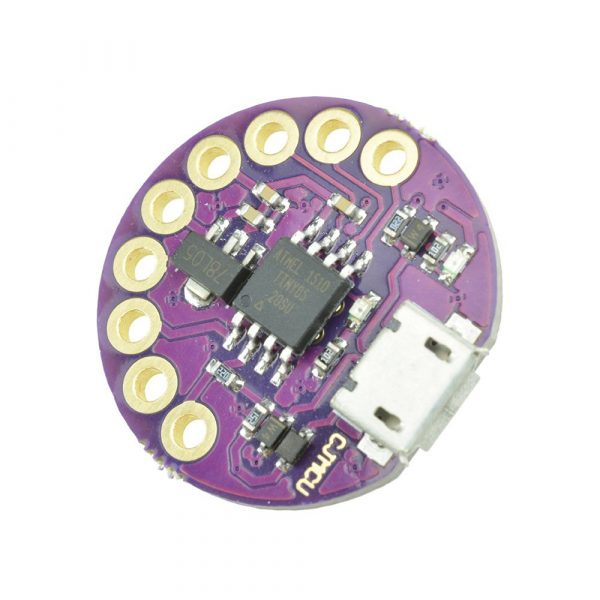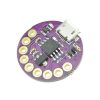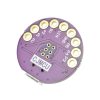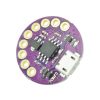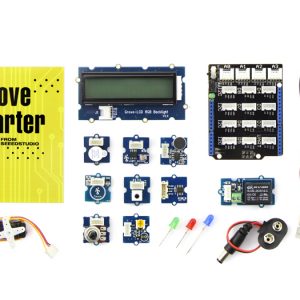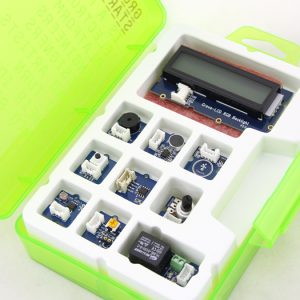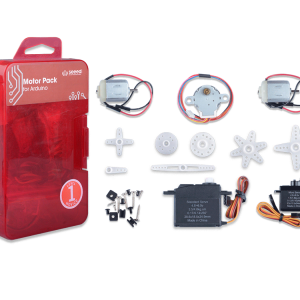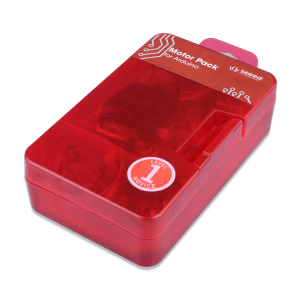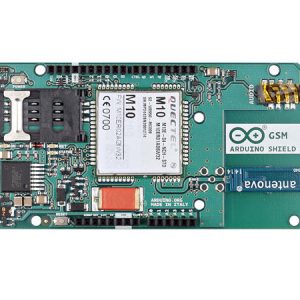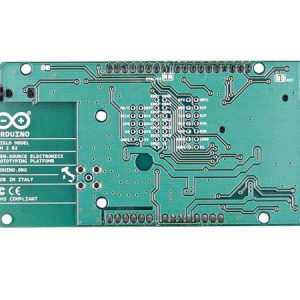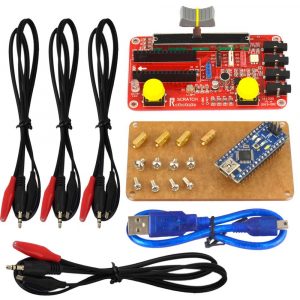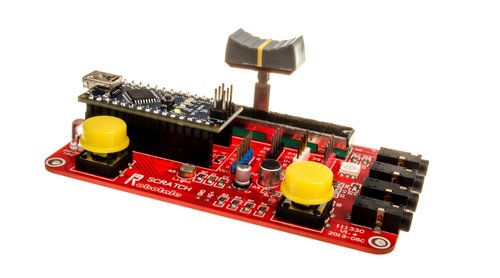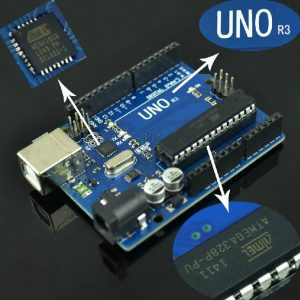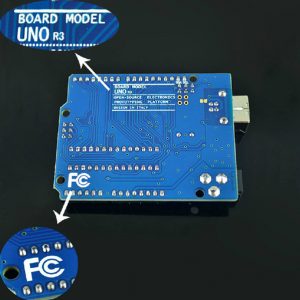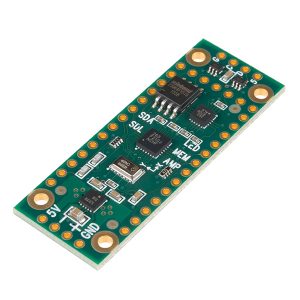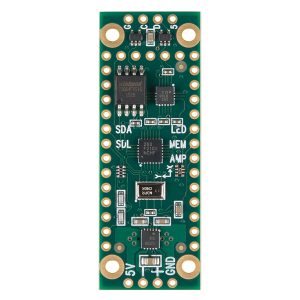- 商品說明
商品說明
CJMCU ATtiny85 微型單片機開發板 ATtiny85 微型單片機 arduino 穿戴裝置開發板系列
愛特梅爾公司(Atmel Corporation) 宣布其低功耗的ATtiny 10/20/40微控制器(MCU) 系列,針對按鍵、滑塊和滑輪等觸控感應應用予以優化。這些器件包括了AVR MCU 及其專利的低功耗picoPower技術,是對成本敏感的工業和消費電子市場上多種應用,如汽車控制板、LCD電視和顯示器、筆記本電腦、手機等的理想選擇。
ATtiny MCU系列介紹
愛特梅爾ATtiny 新型單片機集成有愛特梅爾的AVR 微控制器,以及包括1KB至4KB 的閃存,帶有32 KB至256 KB 的SRAM。此外,這些器件支持SPI 和TWI (具備I2C-兼容性) 通信,提供最高靈活性和1.8V至5.5V的工作電壓。ATtinyAVR使用愛特梅爾專利的picoPower技術,耗電極低。通過軟件控制系統時鐘頻率,取得系統性能與耗電之間的最佳平衡,同時也得到了廣泛應用。
https://github.com/sparkfun/LilyTiny_LilyTwinkle
Arduino 範例碼
/******************************************************************************
LilyTiny (ATtiny85, internal 8 MHz clock)
Emily Lovell
Controls the behavior of up to four LEDs, depending on pin:
Pin 0: fades in and out
Pin 1: heartbeat
Pin 2: blinks on and off
Pin 3: twinkles randomly
******************************************************************************/
// Constant definitions
#define maxBrightness 255.0
#define maxTimeOn 9999
#define blinkTime 125
// Variables and constants for fading pin. Needs to be a pin with PWM hardware
// available; on the Tiny85 that's pin 0 and pin 1 only.
#define fadePin 0 // Redefine the pin name to something
// application specific.
int fadeDirection = 1; // 1 is brighter, -1 is dimmer
int fadeStep = 1;
int fadeBrightness = 1;
// Variables and constants for fading pin. Needs to be a hardware PWM pin; on
// Tiny85 that's pin 0 and pin 1 only.
#define HEARTPIN 1 // Redefine the pin name to something
// application specific.
int heartStage = 0;
float heartBrightness = 0;
float heartCounter = 0;
// variables for blink pin (pin 2)
int blinkPin = 2;
int blinkDelay = blinkTime;
int blinkState = false;
// variables for twinkle pin (pin 3)
int twinklePin = 3;
int timeOn = 0;
float currentBrightness = 0;
int targetBrightness = 0;
float timeToBright = 0;
float stepToBright = 0;
void setup()
{
pinMode(twinklePin, OUTPUT);
startOver();
pinMode(blinkPin, OUTPUT);
}
void loop()
{
// calculate brightness for twinkle pin (determined
// by how much time the LED is on vs. off)
timeOn = calcTimeOn(currentBrightness);
digitalWrite(twinklePin, HIGH);
delayMicroseconds(timeOn + 1);
digitalWrite(twinklePin, LOW);
delayMicroseconds(maxTimeOn - timeOn);
// recalculate brightness for twinkle pin
currentBrightness += stepToBright;
timeToBright--;
if(timeToBright == 0)
startOver();
// calculate brightness for heartbeat pin (by cycling
// through phases of pulse pattern)
heartCounter++;
if (heartCounter > 144) {
heartStage = (heartStage + 1) % 4;
heartCounter = 0;
}
else {
switch(heartStage) {
case 0:
analogWrite(HEARTPIN, heartBrightness);
heartCounter += 144/12.0;
heartBrightness += 255/12.0;
if (heartBrightness > 255)
heartBrightness = 255;
break;
case 1:
analogWrite(HEARTPIN, heartBrightness);
heartCounter += 144/24.0;
heartBrightness -= 255/24.0;
if (heartBrightness < 0)
heartBrightness = 0;
break;
case 2:
analogWrite(HEARTPIN, heartBrightness);
heartCounter += 144/12.0;
heartBrightness += 255/12.0;
if (heartBrightness > 255)
heartBrightness = 255;
break;
case 3:
analogWrite(HEARTPIN, heartBrightness);
heartCounter += 144/72.0;
heartBrightness -= 255/72.0;
if (heartBrightness < 0)
heartBrightness = 0;
break;
}
}
// drive blink pin high or low, depending on how much time has passed
blinkDelay--;
if (blinkDelay == 0) {
blinkDelay = blinkTime;
blinkState = !blinkState;
digitalWrite(blinkPin, blinkState);
}
// increase/decrease brightness of fade pin in steady incremental steps
analogWrite(fadePin, fadeBrightness);
fadeBrightness += fadeStep * fadeDirection;
if (fadeBrightness >= 255) {
fadeBrightness = 255;
fadeDirection = -1;
}
if (fadeBrightness <= 0) {
fadeBrightness = 0;
fadeDirection = 1;
}
}
// calculate ratio of time LED is on/off to acheive particular brightness
int calcTimeOn(int desiredBrightness) {
return desiredBrightness / maxBrightness * maxTimeOn;
}
// restart a new twinkle
void startOver(){
if (random(0, 1) == 1)
targetBrightness = currentBrightness + random(100, 200);
else
targetBrightness = currentBrightness - random(100, 200);
if (targetBrightness < 0)
targetBrightness = maxBrightness + targetBrightness;
targetBrightness %= (int)maxBrightness;
timeToBright = random(10, 30);
stepToBright = (targetBrightness - currentBrightness) / timeToBright;
}
相關商品
-
Grove Starter Kit for Arduino 入門實驗套件 seeed原廠
0 滿分 5 分產品特性
- 標準化—可擴展的拼圖形狀,統一的四引腳連接器,螺絲孔網格,邊緣焊點,減少重複開發,不同工程可重複使用減少對環境的污染
- 緊湊—2cm×2cm大小,無縫接合,表面安裝元器件,0mm接線
- 友好—易連接,傻瓜式,多種擴展模式,開放的DIY、庫和演示代碼
- 充足—有普通的基本電路(– Button、– LED)及專業的感測器(陀螺儀、指南針)等多種選擇,根據要求可繼續增加,協力廠商支持,可重複使用
- 基於社區—通過投票、民主設計、專案和配置共用、利益共用商業模式滿足需求,可出租及重複使用
NT$1,429NT$1,400 未稅加入購物車Quick View -
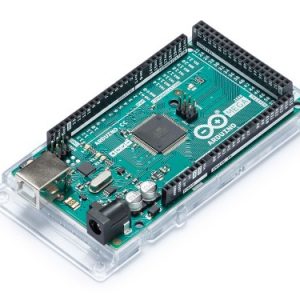
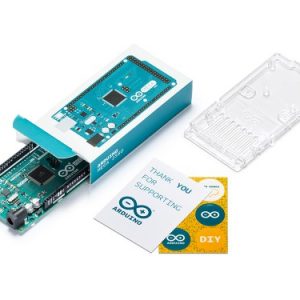 加入購物車Quick View
加入購物車Quick View美國官方原廠授權經銷 Arduino Mega2560 R3 含底殼 (Made in Italy) 附1.3m長傳輸線
0 滿分 5 分NT$1,800 未稅Arduino Mega2560 R3 是一塊以 ATmega2560 為核心的微控制器開發板,本身俱有54組數字I/O input/output端(其中14組可做PWM輸出),16組模擬比輸入端,4組UART(hardware serial ports),使用16 MHz crystal oscillator。由於具有bootloader,因此能夠通過USB直接下載程序而不需經過其他外部燒寫器。供電部份可選擇由USB直接提供電源,或者使用AC-to-DC adapter及電池作為外部供電。
加入購物車Quick View -
Motor Pack 舵機工具包 for Arduino seeed原廠
0 滿分 5 分NT$667NT$560 未稅加入購物車Quick View -
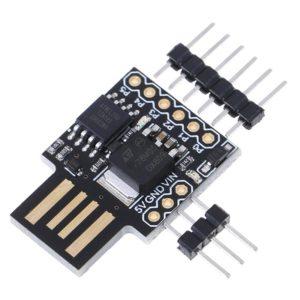
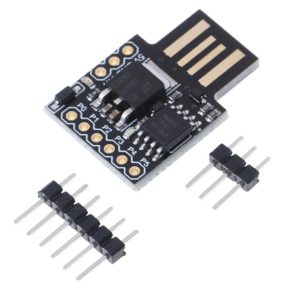 加入購物車Quick View
加入購物車Quick ViewATTINY85 USB開發板 Digispark Kickstarter USB開發板 相容Arduino
0 滿分 5 分NT$160 未稅Digispark Micro 使用Micro USB介面,可直接使用Micro USB 線(長度比較長,比較方便)連接USB介面進行程式調試燒錄,無需USB轉序列介面模組。
加入購物車Quick View -
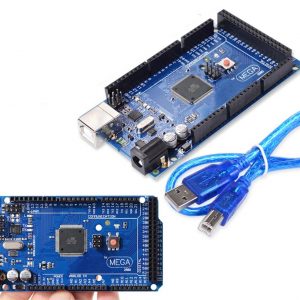
 加入購物車Quick View
加入購物車Quick ViewMEGA 2560 R3 副廠開發板 ATMega16U2 採用原廠晶片 通過美國FCC認證 送1.3m長傳輸線
0 滿分 5 分NT$760 未稅採用全新原廠晶片及國際標準環保材質生產製造,通過美國FCC認證
加入購物車Quick View -
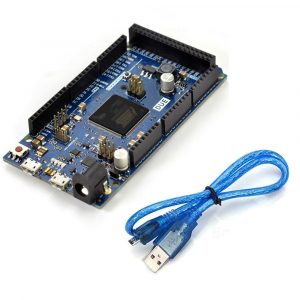
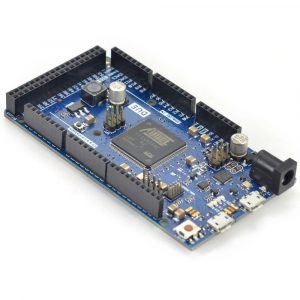 加入購物車Quick View
加入購物車Quick View副廠 DUE R3 ARM 32位 開發板 (完全相容 Arduino) / Atmel SAM3X8E / 附 micro USB線
0 滿分 5 分NT$1,300 未稅Arduino Due 是一塊基於 Atmel SAM3X8E CPU的微控制器板.它是第一塊基於32位ARM的Arduino. 和之前的ArduinoMega非常類似,它有54個數字IO口(其中12個可用於PWM輸出),12個模擬輸入口,4路UART硬件串口。但是它的時鐘頻率達到84 MHz, 還有一個USB OTG接口, 兩路DAC(模數轉換),兩路TWI。Arduino Due最大的變化是它的工作電壓為3.3V。IO口可承載電壓也為3.3V。因此它不兼容原來的為5V設計的Shield和外設。不恰當的連接5V電源和外設可能會燒燬Arduino DUE,請在使用前檢查好電壓。
加入購物車Quick View -
Arduino GSM Shield 2 義大利製 Arduino 原廠進口 內建集成天線
0 滿分 5 分注意:GSM Shield 僅適用於 2G 網絡。購買前請檢查您所在的國家/地區是否有通行的2G電信網絡可使用,不接受電信網路問題退貨 !
Arduino GSM Shield 2 擴展板可以利用GPRS無線網絡將Arduino連至網際網路。只需將該擴充版插到Arduino板上,插入來自於提供GPRS業務的運營商的SIM卡,按照幾個簡單的步驟即可開始通過網際網路控制您的世界。您還可以撥打/接聽語音電話(您需要1個外部揚聲器和麥克風電路)和發送/接收SMS信息。
NT$3,900NT$3,560 未稅加入購物車Quick View -
Scratch for Arduino 互動學習 Arduino工具組 NANO 與 Scratch 學習套件 附贈教學光碟
0 滿分 5 分目前有許多學校使用Scratch教學程序語言概念,其實也可將 Arduino與 Scratch結合,讓學生自撰寫Scratch程控Arduino做出各種動作,或是由Arduino取得外部傳感器偵測到的數值。我們提供了SCRATCH板和一塊 NANO 328 控制板,裡面有滑動電阻器、按鍵、光敏電阻、和麥克風語音模塊,結合S4A軟件,我們可以從Arduino取得可變電阻的變化,轉換成數值後再讀取到Scratch程序中,控制畫面中的貓旋轉,讓學生可以自己創作不同交互式人機效果。我們也為套件製作了配套資料,借助這些資料愛動手的你肯定可以玩轉它們。
NT$1,429NT$1,140 未稅加入購物車Quick View -
UNO Rev3 副廠開發板 通過美國FCC認證 相容Arduino 環保材質 附1.3m長傳輸線
0 滿分 5 分- 通過美國FCC認證
- 使用全新Atmega 16U2 晶片替代 8U2.意味著更高的傳輸速率和memory.
- 在Mac和Linux系統中無需安裝驅動。(在windows系統中需要Arduino IDE驅動)
- 增加了 SDA and SCL 介面
NT$400NT$380 未稅加入購物車Quick View -
Teensy Prop Shield 開發板 SparkFun原廠
0 滿分 5 分Teensy Pro Shield用在小型手持或穿戴裝置上製作互動式燈光和音效。板子內建10DoF(自由度)運動感測器,2W音頻放大器,跟高速5V緩衝器以及8MB快閃記憶體。
NT$1,219NT$1,060 未稅加入購物車Quick View

